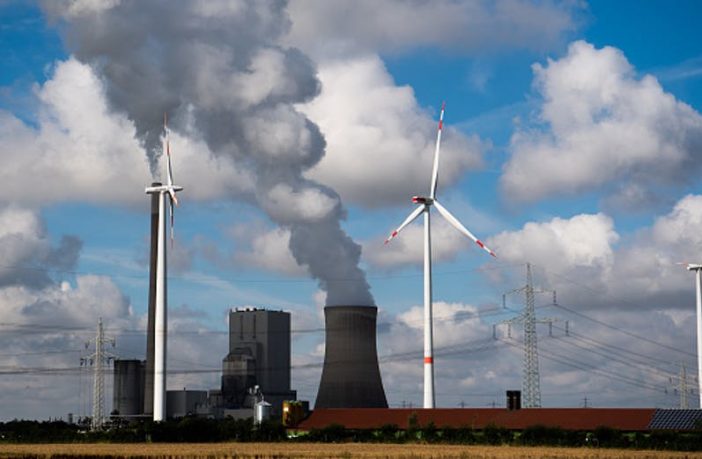- With 80% of the world’s population without access to electricity resides in Sub-Saharan Africa — it is clear that the current fossil fuel based energy system fails to meet Africa’s power needs.
- Something needs to be done quickly.
Renewables offer a compelling solution. Not only are they the most rapidly deployable and versatile technology available. They are also the most affordable.
A recent analysis by the International Renewable Energy Agency (IRENA) shows that the adoption of renewable power in Africa since the year 2000 has led to USD 19 billion in fossil fuel cost savings within the electricity sector.
Given that Africa’s renewable energy potential far outstrips its projected demand for electricity in 2040, the continent has more than enough renewable resources to promote inclusive growth and sustainable development as envisioned by the African Union in its Agenda 2063.
Africa’s renewable energy resource potential, however, is unevenly distributed across the continent. There is a profound need for appropriate infrastructure to be put in place to utilize and distribute this potential among the different regions to enable efficient, sustainable, and affordable access to energy across Africa.
To realize Africa’s vast potential, we must ensure there is adequate investment and infrastructure development to support renewable energy. In the coming years, this means urgently overcoming the structural barriers across three priorities: infrastructure, policy, and institutional capabilities.
Continued investments in cross-border transmission infrastructure and a deepening of electricity trade can bring more flexibility to achieve a smart diversified generation structure and accommodate the high share of variable renewables, thus enhancing Africa’s grid reliability and resilience.
To achieve this transformation, in 2021 the African Union launched the African Single Electricity Market (AfSEM) aimed at creating one of the largest electricity markets in the world by 2040.
The Continental Power System Masterplan (CMP), under which IRENA collaborates with AUDA-NEPAD, serves as a blueprint and supports the establishment of a long-term continent-wide planning process for power generation and transmission involving all five African power pools.
Implementing this ambitious plan will be a herculean task, requiring an extraordinary level of financial resources—a burden that African nations cannot shoulder alone. As Kenya’s President William Ruto made clear at the recent launch of the Accelerated Partnership for Renewables in Africa (APRA), which IRENA facilitates, the question is not whether Africa has the ambition, but how to translate ambition into reality.
The energy transition requires large public investment to trigger systemic change and build the physical infrastructure needed to develop a new energy system powered by renewables. This is where multilateral financial institutions come into play.
For too long, institutions have addressed symptoms rather than root causes. While funding individual projects—be they utility-scale or off-grid—is crucial, without the necessary structural changes, this approach is not comprehensive. It cannot hope to attract sufficient capital to fundamentally transform the continent’s energy reality to deliver its socioeconomic development goals. A change in approach is needed.
It is time to reimagine how multilateral cooperation works and to strengthen collaboration between the Global North and the Global South. Reform is needed to the way lending is made. Priority must be given to building supportive physical infrastructure, enhancing local capacities, and creating local supply chains leveraging Africa’s abundant critical materials. All of this must be done in a way that adds economic value for African countries.
Only 2% of global investments in renewable energy in the last two decades were made in Africa. The recent initiative announced by the COP28 Presidency during Africa Climate Week marks a significant milestone for the continent. Not only is the USD 4.5 billion commitment to develop clean power in Africa a significant sum, it is also targeted to address key energy transition barriers, including the continent’s infrastructure needs.
Later this year, at COP28, the first Global Stocktake since the Paris Agreement will be held in the United Arab Emirates. This event will measure the gap that remains between climate pledges and action. The moment, however, will also present us with a chance to chart a new course.
As we approach this pivotal moment in history, it is imperative that we construct an action-oriented narrative that tackles the key barriers. Doing so will enable us to take meaningful strides towards keeping the 1.5-degree Celsius temperature rise within reach.
Authors: Francesco La Camera, IRENA Director-General & Nardos Bekele-Thomas, AUDA-NEPAD CE
This article was originally published in pv magazine and is republished with permission.
Disclaimer: The articles and videos expressed in this publication are those of the authors. They do not purport to reflect the opinions or views of Green Building Africa, pv magazine, our staff or our advertisers. The designations employed in this publication and the presentation of material therein do not imply the expression of any opinion whatsoever on the part Green Building Africa concerning the legal status of any country, area or territory or of its authorities.















